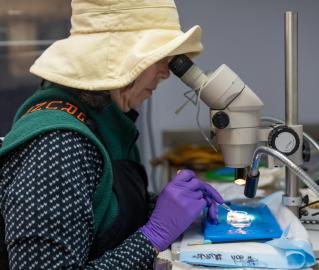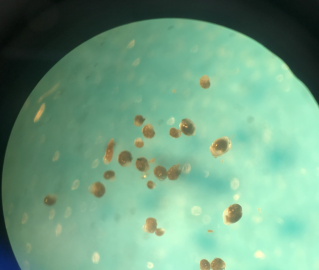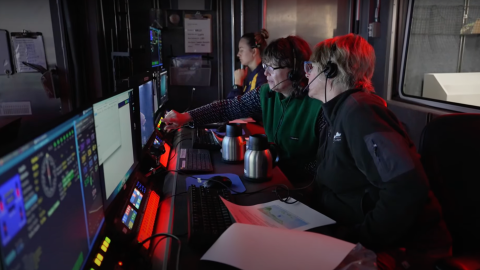Sampling for Microscopic Forams and Deploying Novel Technologies
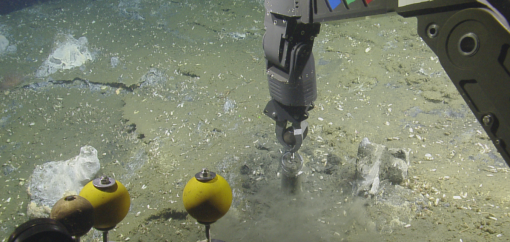
Deploying Novel Technologies and Sampling for Microscopic Forams
Launching our 2021 E/V Nautilus season, researchers will spend three days exploring oxygen minimum zones off the coast of southern California and seven days conducting seafloor mapping. Lead Scientists Dr. Joan Bernhard, Woods Hole Oceanographic Institution, and Dr. Peter Girguis, Harvard University, will work with Expedition Leader Dr. Nicole Raineault aboard Nautilus and from shore to conduct this expedition.
This expedition starts off the coast of Southern California in the Santa Barbara Basin, a hotspot of biogeochemical cycling where we will conduct exploratory work to support Woods Hole Oceanographic Institution and Harvard University researchers in their NASA-funded projects. There, ROV Hercules will collect short pushcores in sediments with microbial mats and microscopic organisms known as foraminifera, as well as measure oxygen content, ambient light, conductivity, temperature, and depth of the water while exploring across the oxygen gradient on the seafloor and through the water column.
The Oxygen-Deprived Waters of California’s Santa Barbara Basin
Santa Barbara Basin is one of many basins in the California Borderlands, a tectonically active area with long, continuous faults capable of generating strong earthquakes near densely-populated urban centers. More than 15 deep basins are found in this region, many of which contain low-oxygen waters. SBB is bounded on the north by the California coast and to the south by the Channel Islands, and irregular flushing of the basin makes the waters either hypoxic (low levels of oxygen) or anoxic (void of oxygen). These extreme environmental conditions make it an ideal location to conduct research for sediment paleoclimate and astrobiological studies.
The overall goal of this project led by Dr. Joan Bernhard from the Woods Hole Oceanographic Institution is to advance our understanding of the evolution of eukaryotic life on Earth by examining living foraminifera (single-celled eukaryotes) found in a low-oxygen environment in the deep sea that is similar to what early conditions might have been on our planet. Understanding how these microscopic organisms are able to inhabit a variety of environmental conditions could lead to understanding more complex microbial life beyond Earth.
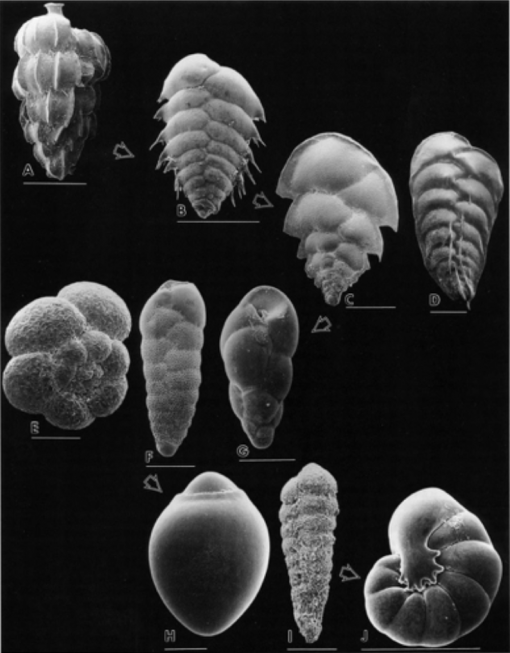
Metabolic Innovations of Foraminifera in Oxygen-Poor Habitats
Foraminiferans are diverse single-celled eukaryotes that likely evolved during the Precambrian period more than 541 million years ago. Analysis of the shells of these microscopic organisms are used in oil and gas exploration as well as characterizing paleoclimate conditions of Earth. Foraminifera are moderately diverse in the region around SBB, but in the deepest parts of the basin, where oxygen is very low or even absent, only a handful of species live. We are now beginning to understand the metabolic adaptations of these foraminifera from this oxygen-depleted to anoxic habitat. A recent study suggests that some species of forams that thrive in low-oxygen conditions may be well-suited to the expansion of oxygen-depleted waters in the oceans due to climate change, and may contribute more to the marine ecosystem in the future.
During this cruise, researchers led by Dr. Joan Bernhard of Woods Hole Oceanographic Institution, will sample sites by retrieving short push core samples that preserve the structure of the sediment and water interface, particularly those that are sensitive to oxygen and other chemical interactions. The use of ROV Hercules permits us to do incubations on the seafloor, as well as be able to preserve samples on the seafloor before they have ever been exposed to sunlight, temperature, or pressure changes.
The Autonomous Biogeochemical In Situ Sensor and Sampler (ABISS)
NASA’s Exobiology Program launched an initiative to investigate the unique communities of microscopic organisms that thrive in a hostile environment, allowing for an opportunity to test technologies that may one day be used to study ocean worlds beyond our home planet. As part of our work in the SBB, shipboard researchers led from shore by Dr. Peter Girguis of Harvard University will deploy the Autonomous Biogeochemical Instrument for in situ Studies (ABISS) lander, a prototype wireless seafloor sampling tool that will be used to study microbial activity and conduct an autonomous incubation experiment on the seafloor.
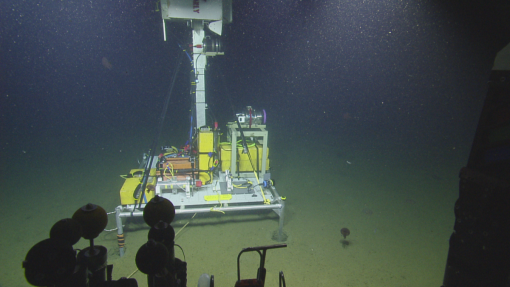
ABISS is designed like an elevator with a battery-operated core computer management system. The ROV will place a sediment sample in the ABISS incubator, to record time-stamped geochemical data, including the levels of oxygen, dissolved gases including methane, dissolved ions, and planktonic microbial community structure.
These efforts are leading up to an autonomous seafloor biogeochemical observatory, particularly as NASA has a growing interest in understanding ocean worlds. When it comes to advancing these technologies, it is not just about miniaturizing hardware but also about understanding how to build an order of operations. ABISS will help launch a test-bed in our ocean that allows us to explore the future technological operations for exploration on ocean worlds beyond our own.
Working Towards Global Ocean Maps
After completing ROV dives, the expedition will then continue north to Astoria, Oregon using the multibeam echosounder and sub-bottom profiler to map gaps in seafloor bathymetry in the U.S. Exclusive Economic Zone. Most of the world’s deep ocean remains largely unmapped and uncharacterized, leaving significant gaps in knowledge needed to manage and protect ocean resources and understand and predict future change. An analysis published in January 2020 showed that nearly one-quarter of the Pacific EEZ off the Washington, Oregon and California coasts has yet to be mapped. Mapping on this expedition by E/V Nautilus will contribute directly to NOAA Ocean Exploration, Ocean Exploration Cooperative Institute, and national goals to map deep waters within the U.S. EEZ by 2030.
This mapping work is supported by NOAA Ocean Exploration through the NOAA Ocean Exploration Cooperative Institute, a consortium of Ocean Exploration Trust, University of Rhode Island, Woods Hole Oceanographic Institution, University of New Hampshire, and University of Southern Mississippi that combines technological and scientific resources and expertise to accelerate and enhance future exploration of the estimated 3 billion acres of submerged US territory. NOAA Ocean Exploration’s domestic efforts are in support of the National Oceanic Mapping, Exploration, and Characterization (NOMEC) strategy and all NOAA-supported data is stored via National Centers for Environmental Information.
Bathymetric data and high-resolution maps produced during this expedition will also contribute to Seabed 2030, a collaborative project between The Nippon Foundation and GEBCO to inspire the complete mapping of the world's ocean by 2030, and to compile all bathymetric data into the freely available GEBCO Ocean Map.
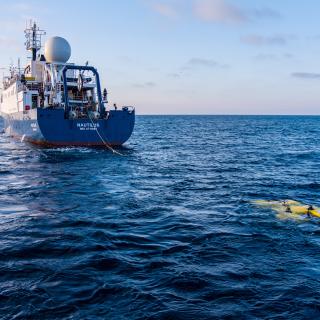
Santa Barbara Basin & West Coast EEZ Mapping
Launching our 2021 E/V Nautilus season, researchers will spend two days exploring oxygen minimum zones off the coast of southern California and seven days conducting seafloor mapping within the traditional and modern lands and waters of the Tongva, Kizh, and Chumash peoples.

